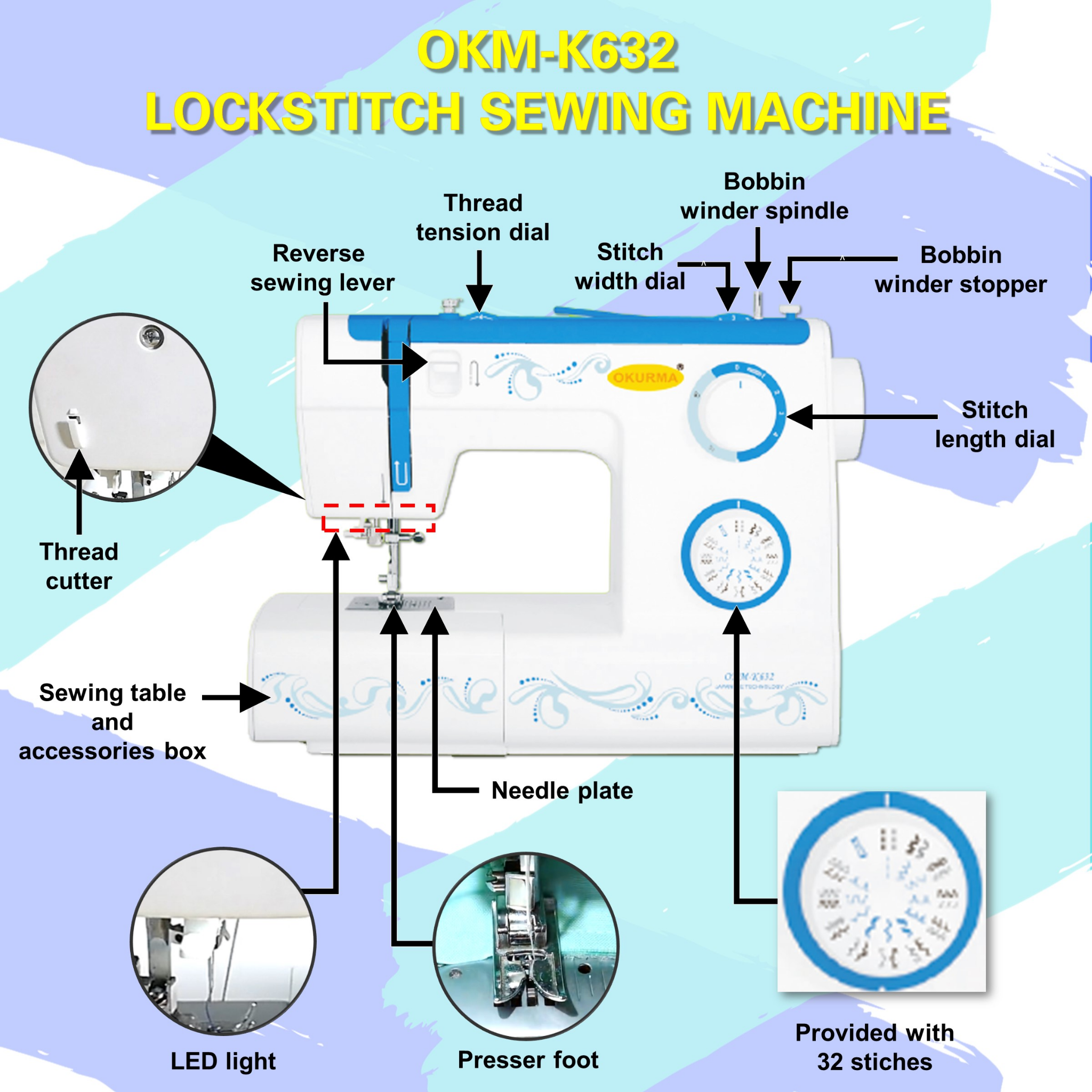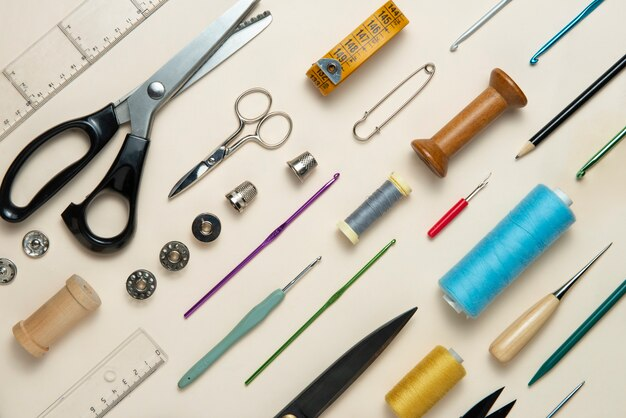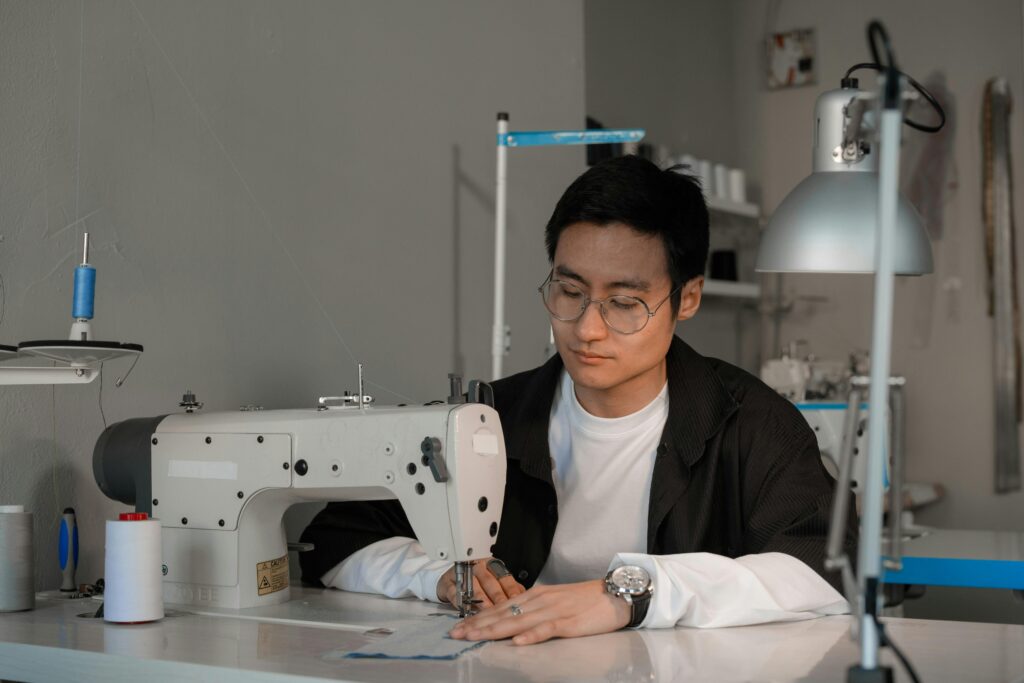If you're looking to enhance your sewing skills and take your apparel projects to the next level, mastering your apparel sewing machine is essential. In this guide, we've compiled eight expert-approved tips to help you become a pro at using your sewing machine.
From understanding the different stitches to troubleshooting common issues, these tips will empower you to create professional-quality garments with ease. Whether you're a beginner or an experienced sewer, these insights will undoubtedly elevate your sewing game. So, let's dive in and unlock the full potential of your apparel sewing machine.
Choosing the Right Sewing Machine for Apparel Projects
When it comes to mastering your apparel sewing machine, it's essential to start with the right equipment. Choosing the right sewing machine for your apparel projects is crucial for achieving professional results. Here are some expert-approved tips to help you make the best choice.
-
Type of Sewing
First and foremost, consider the type of sewing you'll be doing. If you primarily work with lightweight fabrics like silk or chiffon, a machine with adjustable tension and a variety of stitches would be ideal.
On the other hand, if you often work with heavy-duty fabrics such as denim or leather, look for a machine with a strong motor and the ability to handle thicker materials.
-
Machine’s Features
Additionally, pay attention to the machine's features. Look for options like automatic needle threading, adjustable presser foot pressure, and a free arm for sewing cuffs and sleeves. These features can greatly improve your sewing experience and make it easier to achieve professional-looking results.
-
Budget
Finally, don't forget to consider your budget. Sewing machines can vary significantly in price, so it's important to find one that fits within your budget without compromising on quality.
Once you've chosen the right sewing machine, the next step is to familiarize yourself with its functions and features. Take the time to read the instruction manual thoroughly and practice using different stitches and settings. This will help you become more comfortable and confident with your machine.
Additionally, consider investing in some essential accessories like different presser feet, thread spools, and bobbins. These accessories can greatly expand your sewing capabilities and allow you to achieve a wider range of techniques and finishes.
Lastly, don't be afraid to seek guidance from experts or take sewing classes. Learning from experienced sewers can provide valuable tips and tricks that can help you master your apparel sewing machine more quickly. With the right machine, practice, and guidance, you'll be well on your way to becoming a skilled and confident apparel sewist.
Understanding the Different Parts of an Apparel Sewing Machine

Understanding the different parts of an apparel sewing machine is essential for mastering your sewing skills. The machine consists of several components that work together to create beautiful, professional-looking garments.
One important part is the needle, which is responsible for stitching the fabric. It is crucial to select the right needle size and type for the fabric you are working with to achieve the best results.
Another key component is the presser foot, which holds the fabric in place as you sew. Different presser feet are available for various sewing techniques, such as zippers, buttons, and hemming. Understanding how to attach and use these feet properly will greatly enhance your sewing experience.
The machine also has a bobbin, which holds the thread that forms the underside of the stitch. It is important to ensure that the bobbin is correctly threaded and inserted into the machine to prevent tangled threads and uneven stitches.
Additionally, the tension dial controls the tightness of the stitch. Adjusting the tension according to the fabric and thread you are using is crucial for achieving balanced stitches.
Finally, the machine's motor powers the sewing process. Understanding how to control the speed and power of the motor will help you sew smoothly and efficiently. By familiarizing yourself with these different parts of an apparel sewing machine, you will be well on your way to mastering the art of sewing.
Essential Tools and Accessories for Apparel Sewing

When it comes to mastering your apparel sewing machine, having the right tools and accessories is essential. These items can make a significant difference in the quality and efficiency of your sewing projects.
One must-have tool is a good pair of fabric scissors. These scissors should be sharp and have a comfortable grip, allowing you to cut through fabric with ease.
Another important tool is a seam ripper, which is used to remove stitches when you make a mistake. It's always a good idea to have a few different types of sewing needles on hand, such as universal needles and ballpoint needles. These needles are designed for different fabrics and can help prevent damage to your materials.
Additionally, investing in a high-quality sewing machine foot is crucial. The right foot can make it easier to sew different types of seams, such as zippers or buttonholes.
Finally, don't forget about thread! Using high-quality thread can make your sewing projects more durable and professional-looking.
In addition to these tools, there are also several accessories that can enhance your sewing experience. One such accessory is a cutting mat, which provides a smooth surface for cutting fabric.
A measuring tape is also essential for ensuring accurate measurements and straight seams. Magnetic pin cushions are convenient for keeping your pins organized and easily accessible. And of course, you'll need plenty of bobbins to hold your thread. It's a good idea to have a few extras on hand in case you run out mid-project.
Finally, consider investing in a good iron and ironing board. Pressing your seams and fabric as you sew can make a big difference in the final result.
By having these essential tools and accessories, you'll be well on your way to mastering your apparel sewing machine and creating beautiful garments. Get high quality spare parts for apparel sewing machine in Tarmah App.
Threading and Bobbin Winding Techniques
Threading and bobbin winding techniques are crucial skills to master when it comes to operating your apparel sewing machine. Proper threading ensures that the thread flows smoothly through the machine, minimizing the risk of tangles or breakages.
To thread your machine correctly, start by raising the presser foot and turning off the machine. Next, follow the threading path indicated by the machine's instruction manual, making sure to pass the thread through all necessary guides and tension discs.
Once threaded, lower the presser foot and gently pull the thread through the needle, leaving a tail of about six inches. Bobbin winding is the process of preparing the bobbin with the thread that will be used for stitching. To wind the bobbin, start by placing an empty bobbin on the bobbin winder spindle and securing it in place.
Next, pass the thread through the bobbin winding tension disc and guide it through the bobbin winding path. Engage the bobbin winder by pushing it to the right or following the specific instructions for your machine. Once engaged, press the foot pedal or activate the bobbin winder according to your machine's instructions.
As the bobbin winds, ensure that the thread is evenly distributed across the bobbin. Finally, cut the thread and remove the bobbin from the bobbin winder. Threading and bobbin winding may seem like small details, but mastering these techniques will greatly contribute to the success of your apparel sewing projects.
Adjusting and Using Stitch Length and Width for Apparel Sewing
Adjusting and using stitch length and width is crucial for mastering your apparel sewing machine. The stitch length refers to the distance between each stitch, while the stitch width determines the width of the stitch.
By understanding how to adjust and use these settings effectively, you can achieve professional-looking finishes on your garments. When it comes to stitch length, shorter stitches are ideal for sewing delicate fabrics or reinforcing seams.
On the other hand, longer stitches work well for basting or gathering fabric. By experimenting with different stitch lengths, you can find the perfect balance for your specific project.
As for stitch width, it allows you to create decorative stitches or adjust the width of zigzag stitches. This feature is particularly useful when constructing garments with stretchy fabrics, as it helps prevent the stitches from breaking under tension. By mastering the adjustment and use of stitch length and width, you can take your apparel sewing skills to the next level and create beautifully finished garments.
Mastering Different Sewing Techniques for Apparel Projects
Mastering different sewing techniques for apparel projects is crucial for anyone looking to enhance their sewing skills. Whether you're a beginner or an experienced sewist, it's important to have a good understanding of the various techniques involved in apparel sewing.
One key aspect of mastering these techniques is knowing how to use and operate your apparel sewing machine effectively. With that in mind, here are some expert-approved tips for mastering your apparel sewing machine.
First and foremost, familiarize yourself with the different features and settings of your machine. Take the time to read the instruction manual and experiment with the various stitches, tension settings, and presser feet. This will help you gain a better understanding of how your machine works and what it is capable of.
Additionally, make sure to keep your machine well-maintained by regularly cleaning and oiling it. A machine that is in good condition will run more smoothly and produce better results.
Another important tip is to practice threading and rethreading your machine. Proper threading is essential for achieving even and secure stitches. Take the time to learn the correct threading path and practice threading your machine until you can do it without referring to the manual.
Conclusion
In conclusion, when it comes to apparel sewing projects, it is crucial to choose the right sewing machine that suits your needs. Understanding the different parts of an apparel sewing machine is essential for efficient operation.
Additionally, having the necessary tools and accessories can greatly enhance your sewing experience. Threading and bobbin winding techniques are important skills to master in order to achieve optimal results. Adjusting stitch length and width is crucial for achieving the desired outcome in apparel sewing.
Lastly, mastering different sewing techniques is key to successfully completing apparel projects. By considering these topics, you can ensure a successful and enjoyable apparel sewing experience.
If you're considering ordering an apparel sewing machine, Tarmah provides a selection of high-quality machines designed to meet the demands of various sewing projects. Don't hesitate to contact Tarmah at +6074310923/0932 or browse their offerings to find the perfect apparel sewing machine that aligns with your requirements and take your sewing skills to the next level.

